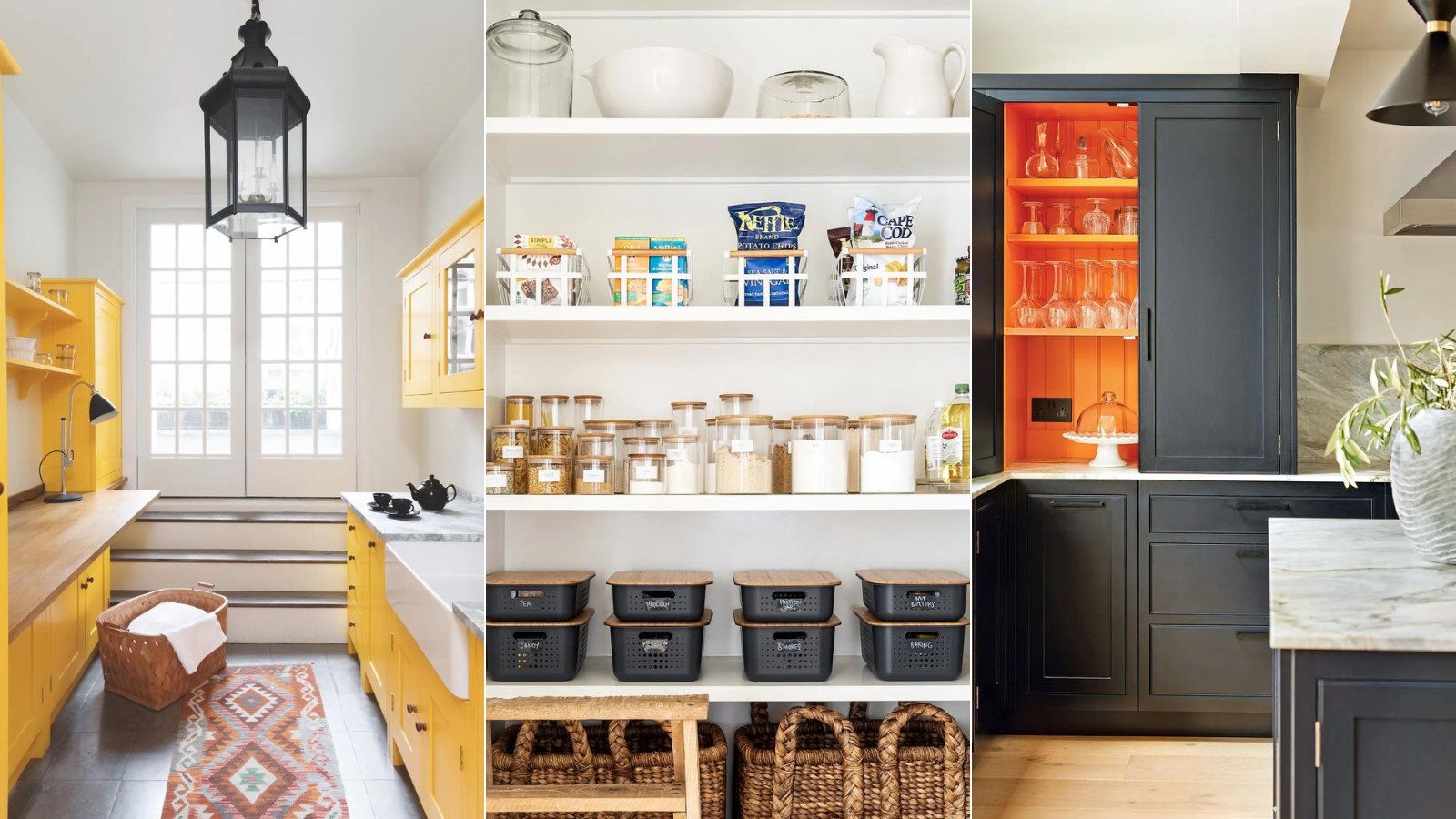
The kitchen doesn’t need to be off-limits to little ones. By organizing a kitchen with children in mind, you can create an orderly, accessible and – most importantly – safe environment for them to spend time in, and perhaps try their hand at some cooking, too.
With enthusiastic young chefs around, you’ll need to be mindful of those not-so-kid-friendly features when organizing a kitchen. Hot stovetops, sharp knives, breakable glassware - safe kitchen storage is essential. If you’re designing a kitchen from scratch, an ‘all-seeing’ kitchen layout and durable, easy-to-clean surfaces are also worth considering.
On the flip side, easy access to certain items – think pint-sized plates and cups, as well as lunch bags and (parent-approved) snacks – encourages independence, and makes your life so much easier, too. But where do you start? That’s where we come in. Follow our expert-approved tips, and you’ll have a stylish cooking space that suits the entire family in no time.
How to organize a kitchen with children in mind
This goes without saying, but be sure to prioritize safety over anything else when organizing a home with kids in mind, particularly in a kitchen. Hot surfaces, sharp knives, cleaning products… there’s a lot to be aware of, so if you’re organizing a home for a new baby or you’ve got young children in the house, be sure to familiarize yourself with baby-proofing and adapt your organization systems accordingly.
‘Installing childproof locks on cabinets containing hazardous items like cleaning supplies or sharp utensils ensures a secure environment. This safety measure not only prevents accidents but also offers peace of mind, allowing children to explore and engage in the kitchen without compromising their safety,' says Karina Toner, Operations Manager at Washington-based cleaning company, Spekless.
You’ll know when your children are ready to be left alone in the kitchen, but until then, close supervision and guidance is essential.
1. Come up with a clever layout
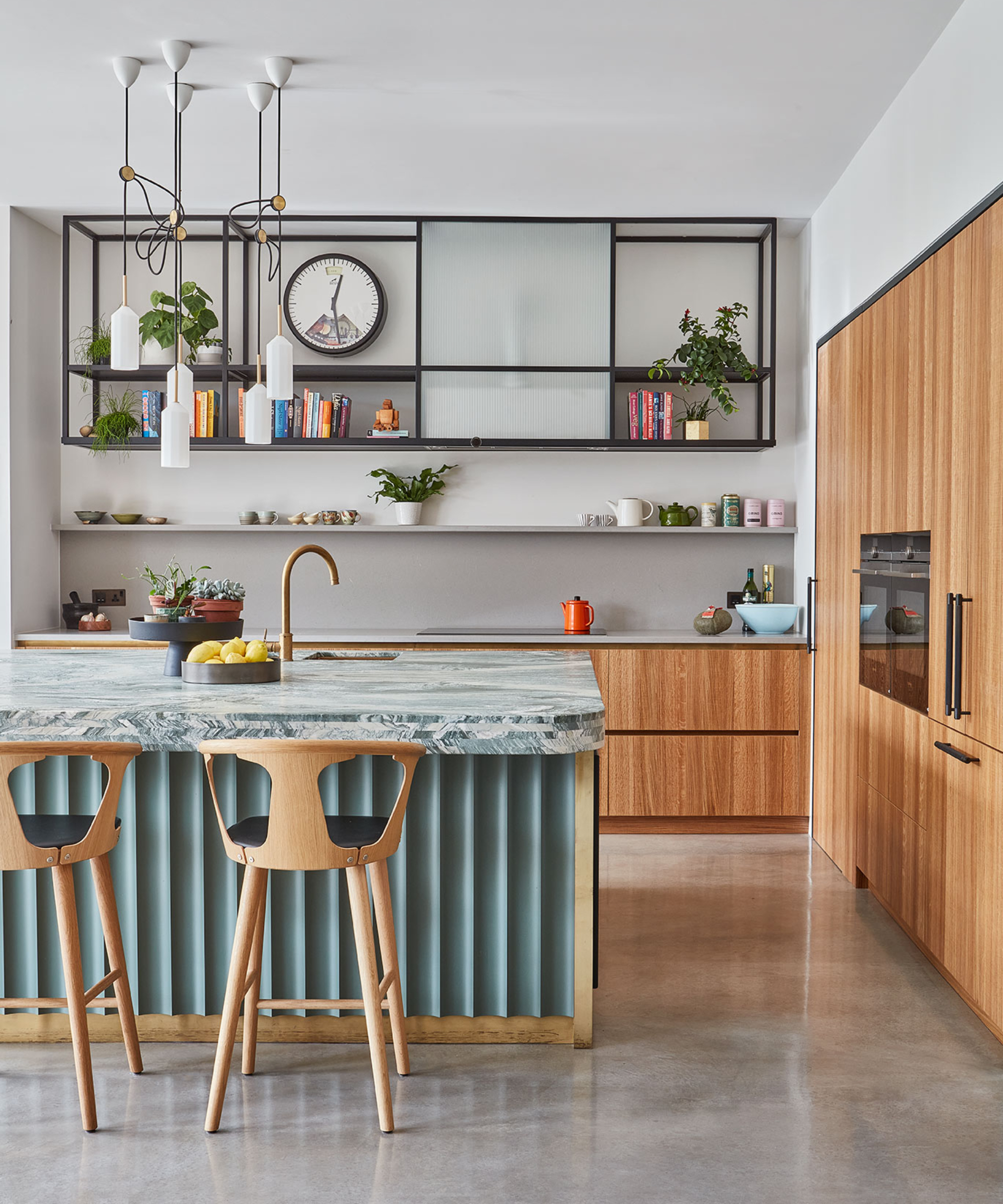
Ideally, you wouldn’t turn your back on your cooking or your kids. So, if you’re designing a kitchen from scratch, choose a kitchen layout that gives you the option to do both. When designing a kitchen island, position the hob on one side and bar stools on the other, or position your sink underneath the window so you’ve got a clear view of the backyard, for example. This way, you can see them, but they can also see you cooking up a storm – they might even learn a thing or two!
2. Think about the flow of your kitchen
There’s no ‘right’ way to organize what goes where in a kitchen. Ensuring a good flow ultimately comes down to what works best for you and your family. Think about how you and your household use the kitchen day-to-day and organize kitchen cabinets to improve traffic flow accordingly.
Positioning crockery and frequently used kitchen tools close to the dishwasher makes unloading quick and easy while laying the table is much more efficient if linens and cutlery are kept within easy reach, close to the dining table or as part of organizing a kitchen island, for example.
Streamlining like this should see daily tasks become less of a chore, which should see younger household members more willing to help out.
‘Keeping a small stool in the kitchen will make it easier for your child to wash their hands, clear the table, help prep, and so on. Remember it's never too late to teach your children healthy eating habits or how to help out with household chores, emptying the dishwasher included’, says professional organizer Lauren Saltman, founder of New Hampshire-based Living.Simplifed.
3. Keep like-items together
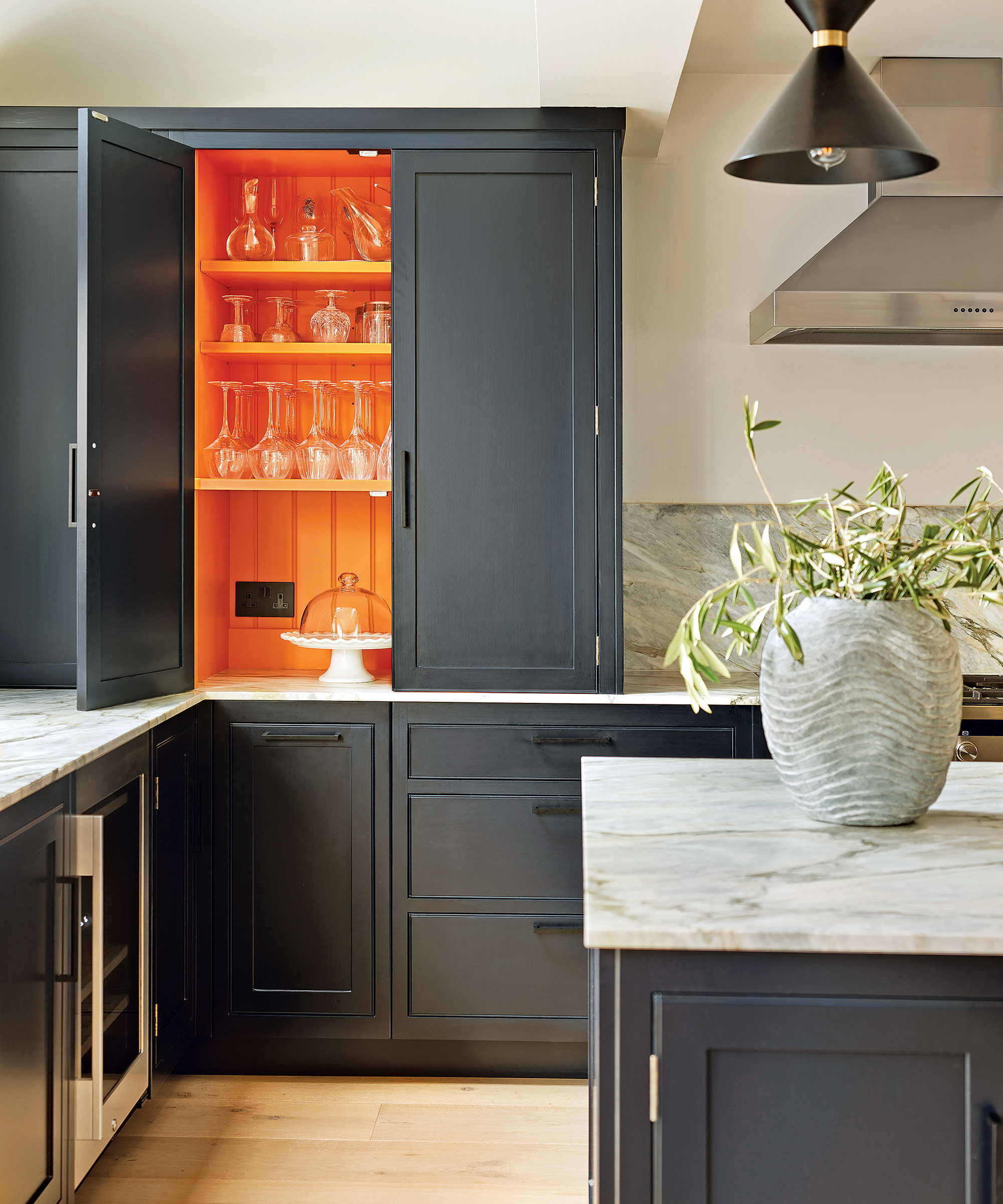
Grouping items by category is a great place to start when tackling any home organizing idea, but particularly one with children in mind. In professional organizer Katherine Blacker’s experience, the most organized families designate a home for everything, so everyone can find what they need quickly and easily – and put it back again afterwards.
‘You might want to rally up the selection of jams and spreads you use for toast into one container, for example. It’s just one easy maneuver to bring them out at breakfast time and return them after use, much easier than going back and forth – particularly if you have indecisive children!’ she says.
Lauren Saltman agrees, and suggests taking it one step further by creating a child-friendly breakfast station. ‘Grouping items so they can create a meal on their own is a great way to encourage self sufficiency’ she says. ‘Cereal and milk is a good place to start; consider decanting into child-friendly containers (a smaller jug for milk, for example) to ensure safety and reduce the likelihood of spills’.
4. Keep things your kids can use down low…
If your children constantly need help accessing items that are out of their reach, it can be pretty frustrating, not just for them but for you too. Just like when organizing a playroom, encourage independence by reserving low-level storage for kid-friendly kitchen items; plastic plates and cups, lunch bags, water bottles, etc.
‘Placing children’s things at their height gives them the opportunity to do things for themselves. Encouraging good habits will mean they become independent adults and helpful to you along the way – family life is all about teamwork, after all,' explains Kathryn Lord, founder of More to Organizing. An expert in organizing with children in mind, she's published several books, including More to Mealtimes, at Amazon.
5. … and those they can’t up high
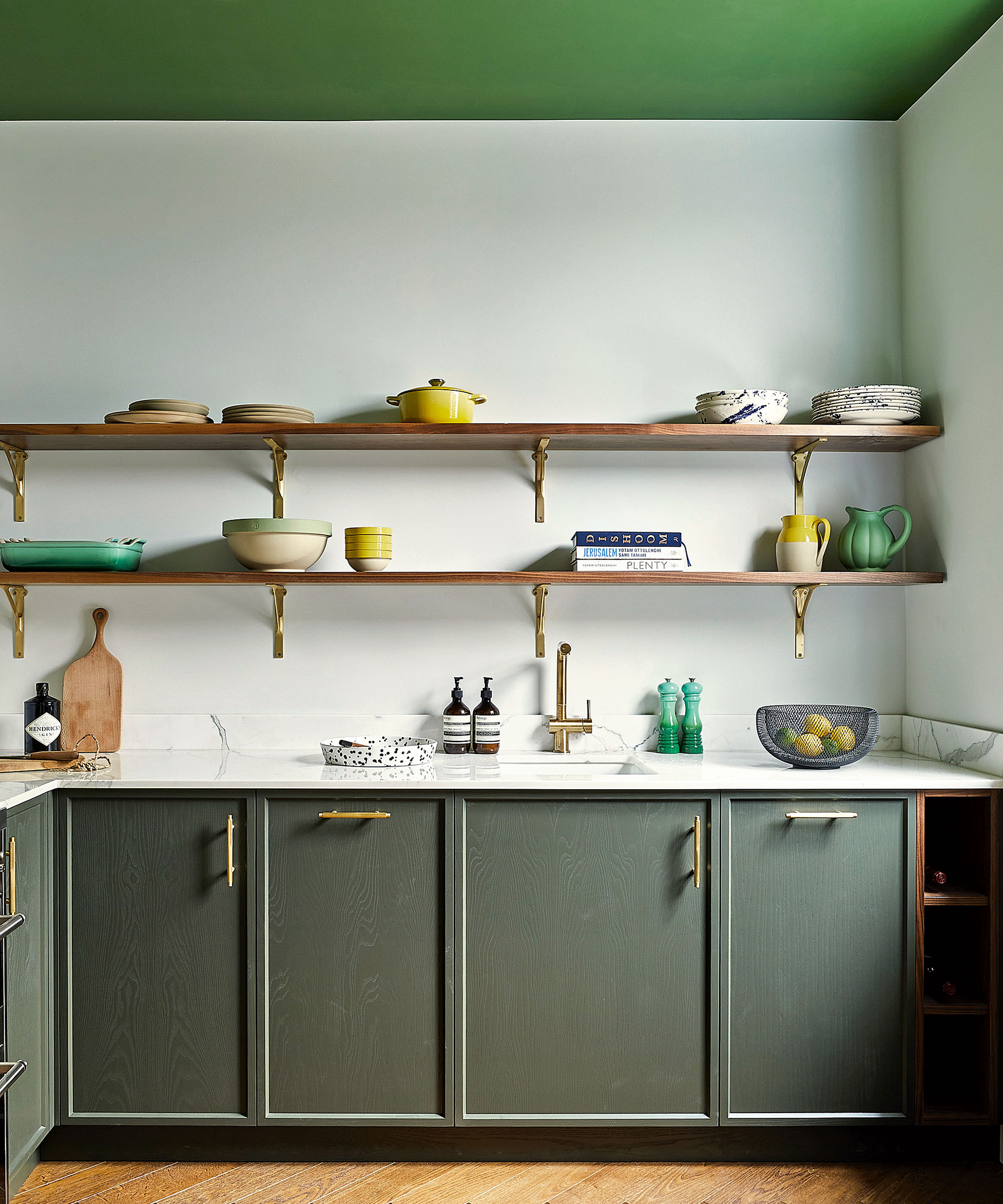
Similarly, assign top-level kitchen storage for anything fragile or potentially dangerous – knives, appliances, precious crockery etc. Be sure it can’t be reached by children, even when standing on a chair or footstool.
‘While sharp and dangerous items should always be stored out of reach, creating a time to practice using scissors, knives and other items under adult supervision means they are less likely to have unnecessary accidents and become more confident with cooking,' says Kathryn Lord.
6 Use drawer dividers
When organizing kitchen drawers with kids in mind, dividers are your best friend. It doesn’t have to be pretty or pricey, functionality is key. Choose a plastic version with smooth sides, like this divider tray at Target, or use long, clear bins. Separate items into easy, broad categories (baking tools, spoons, cutlery, etc.) so there’s less chance of confusion, and encourage little ones to put things back in the right places.
7. Be mindful of how you store things
From clear containers and bins to carousels and risers, investing in the right kitchen organizers can really help both adults and children navigate a kitchen successfully (plus they maximize space – handy if you’re organizing a small kitchen).
Open storage is recommended for kids in general, but when it comes to storing those not-so-kid-friendly items (think cleaning products, medicines, certain food items, etc), you’ll need to give extra thought to your kitchen cupboard storage ideas – think lids and locks.
‘Kids are smart’, reminds professional organizer Mary Jo Contello, founder of Houston-based Organized by MJ. ‘If you’re in doubt, know that there are organizational services out there that specialize in child-proofing. They can help you determine which areas of the kitchen require locks and what kind to use’.
8. Set up healthy snack stations
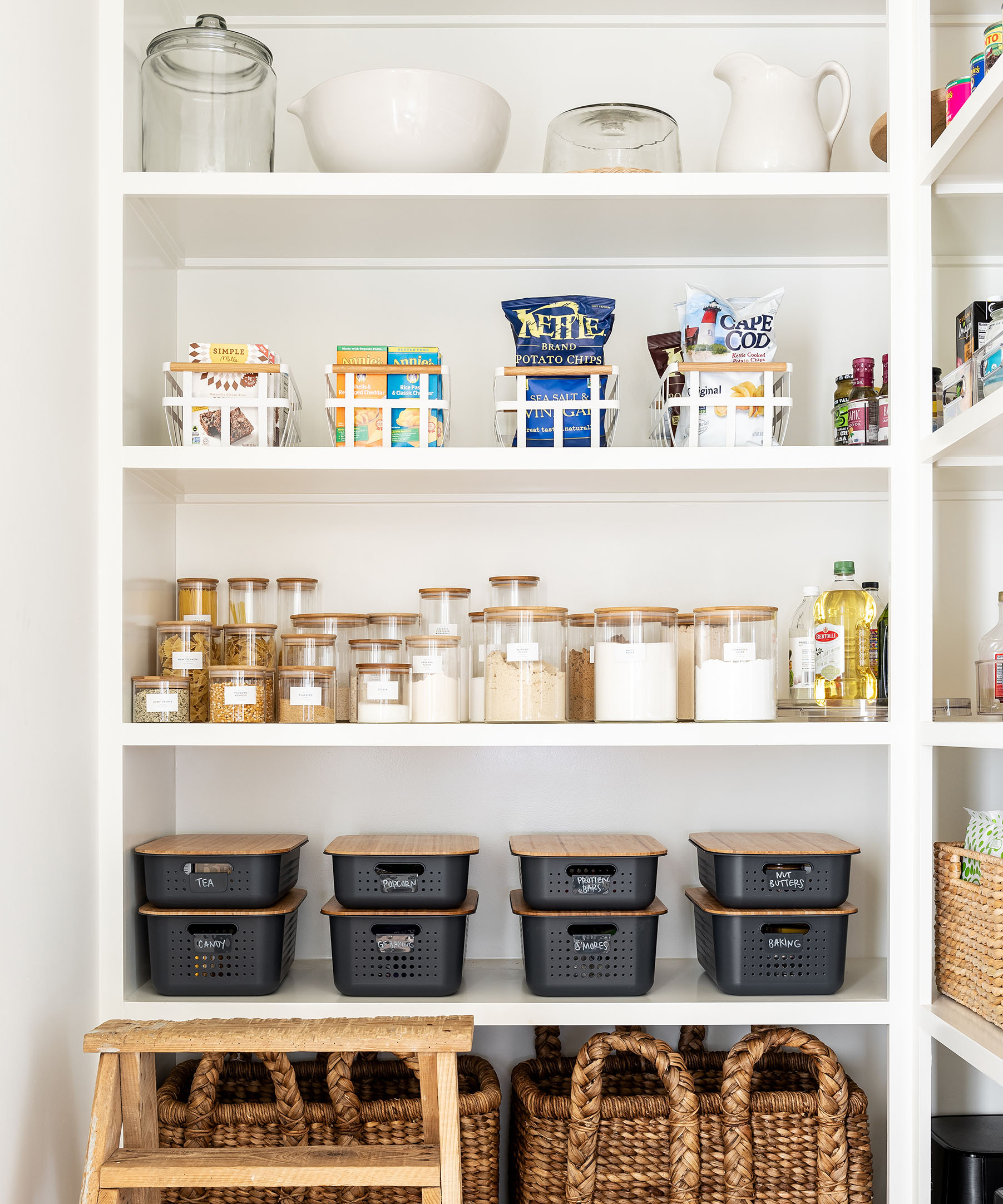
Encouraging kids to choose their own snacks is a healthy way of teaching positive eating habits. Having said that, it’s important you be mindful of what’s readily available.
‘While I believe in supporting children to have balance, there are certain snacks we don’t want them to have access to 100% of the time. Out of sight, out of mind works with children, and vice versa, in sight, in mind. Give fruit, vegetables, and nutritionally valuable snacks prime storage space when organizing a refrigerator and/or when organizing a pantry for children to choose from’, advises Kathryn Lord.
The goal isn’t to prevent children from having treats, but if you want to keep snack battles to a minimum, you might want to keep the sweet stuff behind closed doors to start with – literally. Decanting snacks can also help with portion control, so consider these reusable snack bags at Wayfair.
9. Keep little ones busy whilst you’re cooking
Cooking for a hungry toddler is no joke – or a hungry teenager, for that matter. So save yourself the stress by having ‘distractions’ close to hand.
‘We have a cabinet in our kitchen island dedicated solely to ‘ready-to-go’ activities; coloring books and pencils, pots of playdough and cookie cutters, as well as little toys and easy craft activities. The kids love them. They’re a real lifesaver when I’m in the midst of cooking chaos,' says Lucy Searle, Global-Editor-in-Chief, Homes & Gardens.
10. Mount a family bulletin board
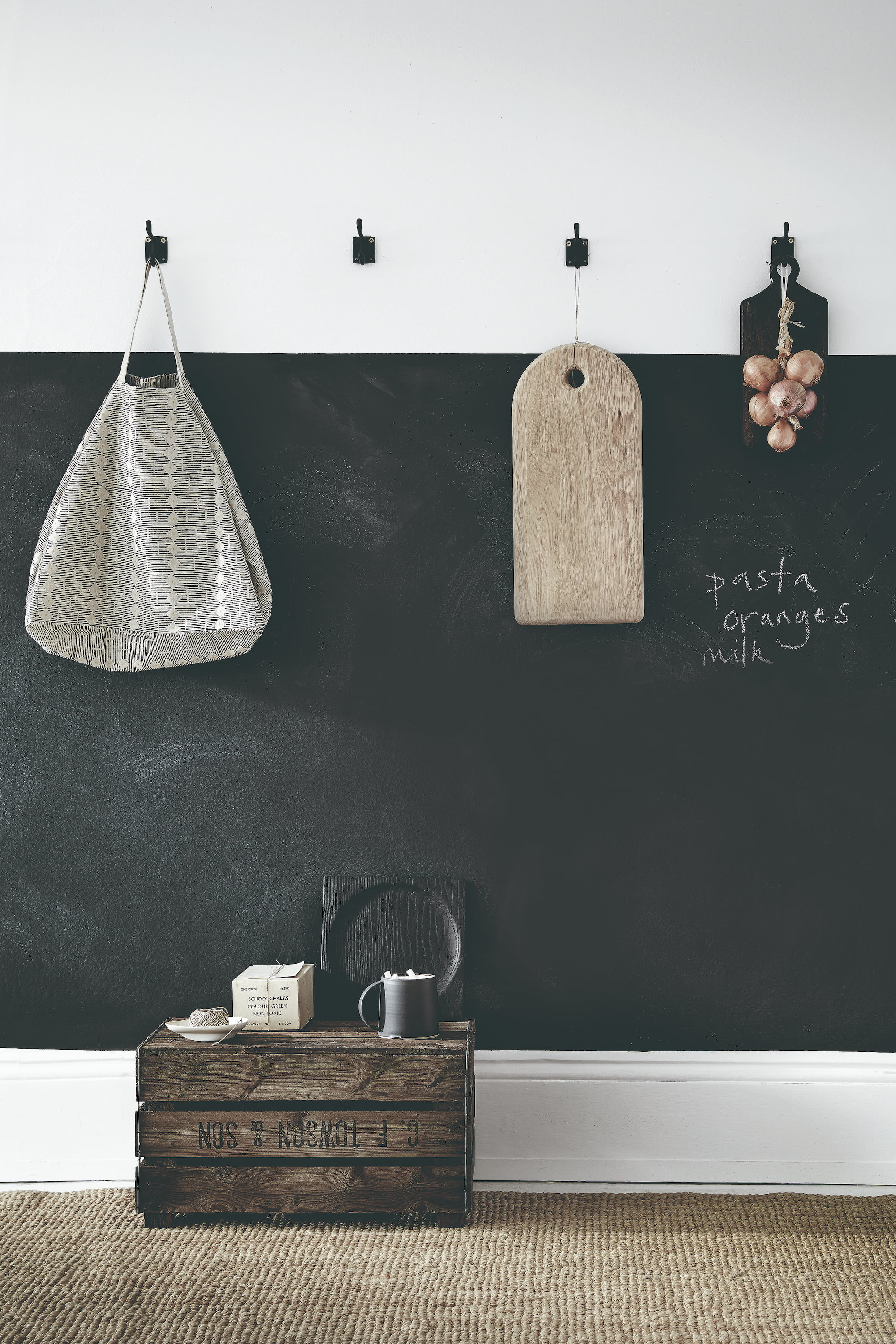
They’re not renowned for tidiness, so unless you want to spend hours decluttering countertops, establish a designated space for kids to put their paper clutter. As well as making for more organized countertops overall, you’re also less likely to lose things.
A bulletin board hung low enough for little ones to reach is a great central space for party invites, school reminders, and artwork, while a stylish chalkboard, like this magnetic version from Amazon, is handy for keeping track of everyone’s weekly schedules.
FAQs
How do you include children in the kitchen?
Teaching your child to be self-sufficient in the kitchen from a young age offers all manner of benefits: increased confidence, healthy eating habits, and a willingness to help, not to mention a potential passion for cooking that’ll see them well into adulthood.
To encourage independence and help them feel included, children should be given access to age-appropriate items and food, along with guidance on how to build good organizational habits – filling up their water bottles and packing a healthy snack before the school run, for example. Take opportunities to involve them in meal prep and cooking tasks, and make it as fun as you can.
As they (and their confidence) grow, allow them more and more freedom, but always prioritize safety over and above everything else.
As you can see, organizing a kitchen with children in mind involves a lot of practical thinking, but that doesn’t mean you have to sacrifice stylish kitchen ideas. Infusing a kitchen with vibrant and child-friendly decor elements creates an inviting ambiance. This approach not only makes the space visually appealing but also stimulates children's interest, making the kitchen an inviting and enjoyable environment for exploration and interaction with food.







